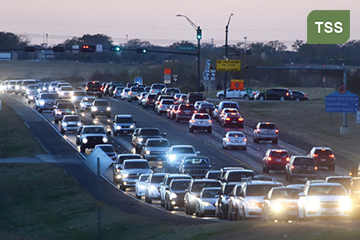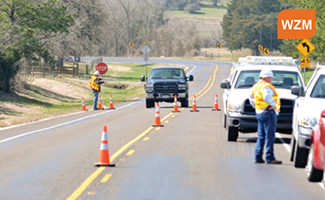Using Capability Maturity Frameworks for Transportation System Management and Operations (TSMO) Program Advancement:
Case Studies and Lessons Learned
Chapter 7. Summary of Impacts and Lessons Learned

Credit: MakDill/Shutterstock

Credit: TTI Communications
Thinking Beyond the Next Crisis
TSMO, by its very definition, is a day-to-day activity. Staff involved in the TSMO program areas have ongoing responsibilities and crises needing management, whether a winter storm or a special event.
Planning for TSMO often takes a backseat to daily response activities. One case study respondent noted that the CMF workshops provide a venue for TSMO managers and operators to think more like "planners" and business analysts in other organizations.
While each case study has differing subject matter, agency structures, and goals, they collectively elicit some common themes and takeaways on the usefulness and challenges of the CMFs.
Bringing internal staff together who would not meet otherwise—Multiple agency officials noted how the CMF process served as a more formalized way to bring together a diverse range of staff and stakeholders who may otherwise not find an opportunity to meet. WYDOT officials asserted that simply bringing maintenance and operations staff together for an in-depth review of the system was a valuable activity and perhaps the most important aspect of its workshop.
Improving interdepartmental relationships—Bringing diverse staff together also has the benefit of strengthening interdepartmental relationships. Perhaps the strongest example is with ODOT, which credits its TIM CMF workshop with leading to a TIM strategic plan that involved stakeholders from across the State, unlike previous plans that focused exclusively within ODOT. As another example, GDOT was able to improve TSS coordination with regional authorities outside of Atlanta through continued workshops that spurred from the agency's original CMF workshop.
Creating a venue for long-term discussions about programs—The day-to-day duties at many agencies prevent large groups of staff from meeting to discuss longer-term issues, priorities, and goals. Several agencies contend that the structured nature of the CMF helped begin conversations that may otherwise have been delayed or simply not have occurred.

Credit: https://www.dksassociates.com/portfolio/odot-or-217

Credit: www.floridatim.com

Credit: TTI Communications
Identifying focus areas—As a critical part of the CMF process, attendees work to identify agency priorities and goals, helping to gain momentum toward targeted improvements. One GDOT official said that the CMF "has helped us understand where our growth opportunities are in better managing our transportation system. It is also something that we can apply with our partners in Georgia to improve safety and mobility."
Generating broader agency understanding and appreciation of TSMO program areas—The CMF process helps call attention to the importance of the program area and generate more agency support of the program area activities. In the case of the KDOT work zone program, the need to generate support was the main reason for undertaking the CMF. Even in the case of the ODOT TIM program, which already had agency buy-in, the CMF process was credited with advancing that priority within the agency and expanding the program's reach to other stakeholders.
Formalizing policies and procedures—The CMF process helps to promote the formalization of agency policies and plans. For example, GDOT revised its official TSS plans to better document policies, and KDOT is actively working on a formal work zone policy and procedures guide to help streamline processes and free up agency time spent clarifying day-to-day issues. Formalization can also be present in staff roles, as with ADOT, which created a new official role dedicated to RWM—the first of its kind at the agency—titled "Road Weather/RWIS Coordinator/Winter Ops Support Manager."